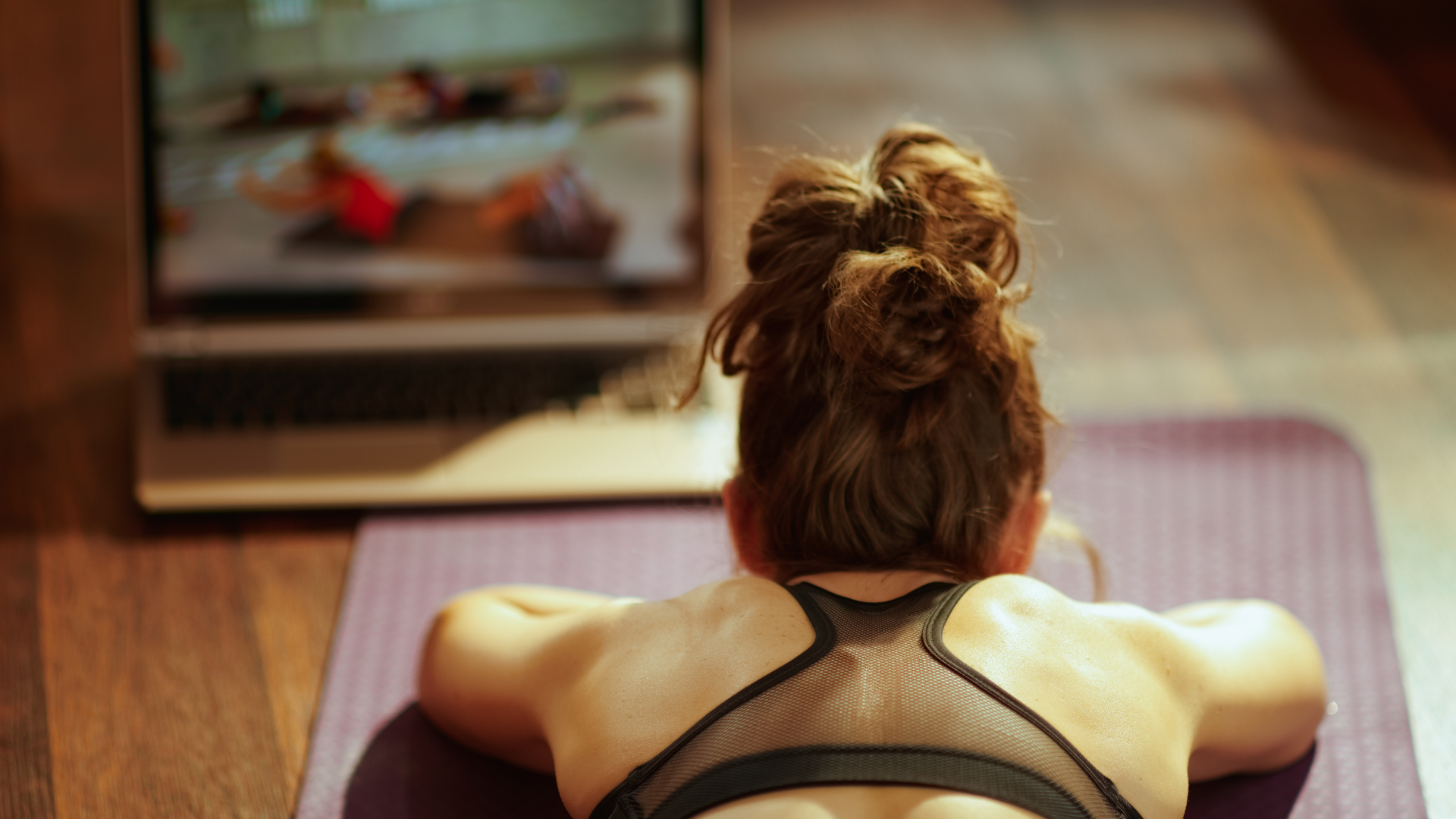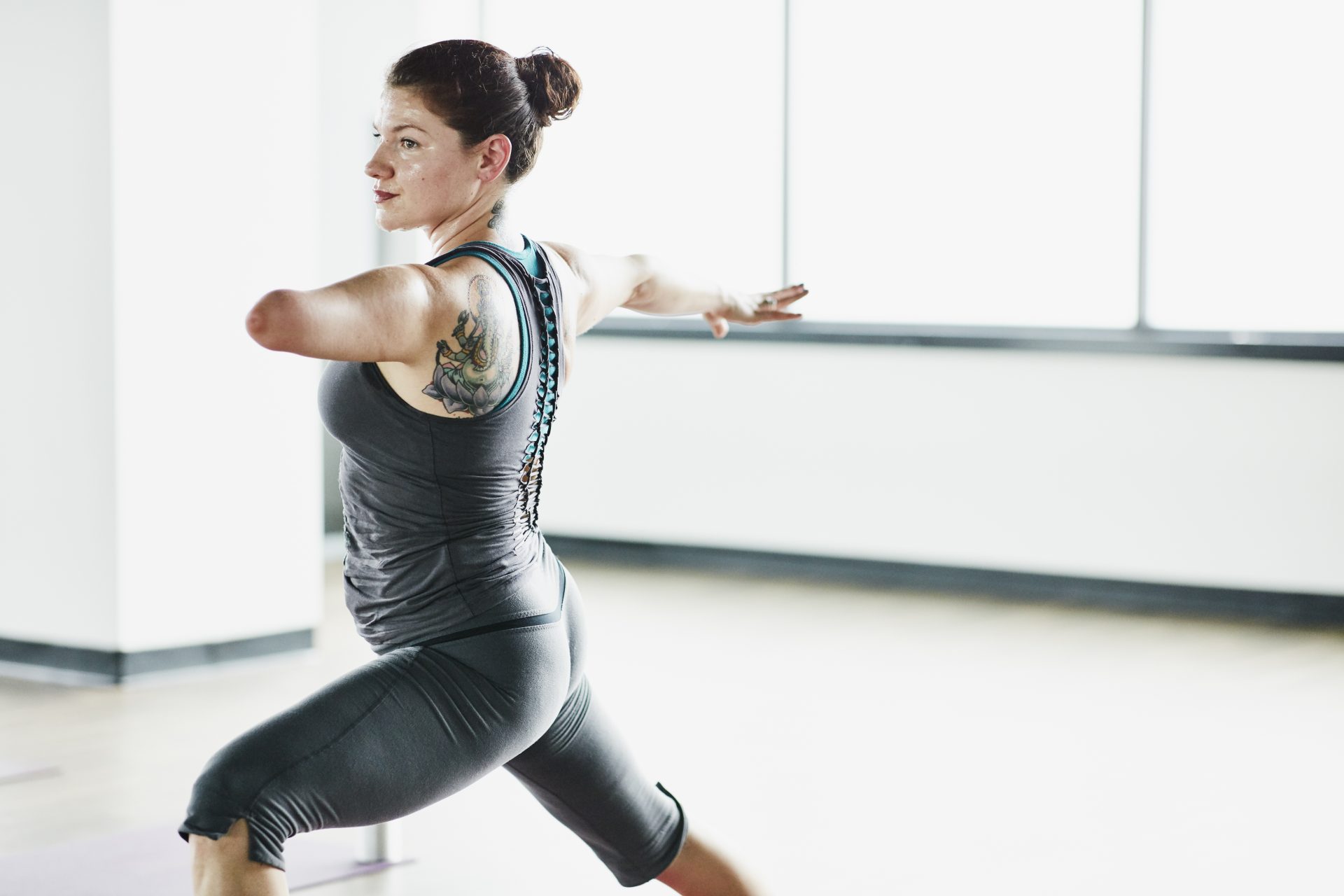If you’ve ever found yourself spontaneously crying during a yoga class, wipe those tears away because it’s perfectly normal. Here’s why certain postures can have us feeling all emotional.
“Give yourself a hug. Thank your body for the amazing things it can do. Be your own best friend.”
Normally, this kind of talking during a yoga class would have me smiling politely on the outside but thinking about dinner on the inside.
However, while hugging myself during my first hot yoga class since before lockdown, my face started leaking unexpectedly.
“Are these… tears?”
You may also like
Stress relief: why yoga is such an effective tool for managing stress
At first I didn’t think much of it because every single pore of my body was also leaking. But then I put my face in a towel and it scrunched up like an old receipt.
I styled it out, pretending to mop my face for a very long time. But when I eventually lay back into shavasana, the “why?” melted away with the rest of me. I did what the instructor said, became my own best friend and told myself, “There, there. It’s OK that you cried, sausage. Maybe you just needed it.”
I was still curious, though. I wanted to say something to the instructor after class, but figured, “Your class made me cry. Why, please?” was probably a lot for someone who had just returned to teaching after a long, quiet pandemic. So I asked around and realised I wasn’t alone.

“Crying during yoga is incredibly common,” says Jenny Stewart, yoga teacher and co-founder of Balance + Glo, a Gift Fit partner. “It’s happened regularly in many of the yoga classes I have taught.
“The practice of yoga does something quite unique. Many people find that as they physically open and relax their bodies, move and breathe in certain ways, and discharge pent up energy in their practice, it can trigger an emotional response too.”
Most people undertake some form of physical exercise as a means of release, whether that’s physical or mental tension. What struck me in this yoga class was how it took me completely by surprise. I wasn’t aware I was carrying any pent-up tension, so what gives?
You may also like
This is why crying to sad songs is actually good for you
According to Biba Zakaria, yoga instructor at Ponzu, this tension could have been lying there for a long, long time. “Everyone is going through their own battles in their own unique set of experiences and environment,” she says.
“Suppressed emotions, tough days at work, and the relationship challenges that form our day to day all get stored in the body if they are not effectively communicated or expressed. The body remembers and stores this as tension.
“Through mindful breathing and movement, yoga delicately brings together your mind, body and spirit. This unity and heightened sense of awareness, in the present moment, may create the space needed for certain feelings, emotions or fears to bubble up in order to release.”
Truth be told, this isn’t the first time I’ve felt emotional during a yoga class. When I tried yin yoga for the first time a few years back, we spent what felt like eternity doing hip-openers. At one point, I could feel myself welling up but wasn’t sure if that was the posture or I was just mourning for the life I had before entering it.

It turns out, if our eyes are the windows, our hips are the doors to our teary, teary souls. “Hip-opening poses such as pigeon pose and yogi squat are most likely to bring on a flood of sadness because of the tightness and tension we naturally store in and around our hip area,” stays Stewart.
“All of that tension can build up over time, trapping negativity and old feelings along with it. When you finally release it, these kinds of emotions can surface too.”
According to yoga teacher Joelle Pettitt, there’s a further physiological, and somewhat evolutionary, reason why crying happens too. “When we are feeling vulnerable, depressed or under threat, we might see our posture become more “curled-in” as a way to protect ourselves from the external world,” she says.
“Our vital organs are all placed on the front of the body and, when we are threatened, it’s a natural response to fold in and protect this area from harm. Unfortunately, the nervous system doesn’t always distinguish life-threatening physical harm from a build-up of day-to-day stress.

“In yoga, when we open the hips and chest, we open the front of the body and this physical opening can be mirrored in a release of emotion, such as crying.”
For many, it’s this processing of emotions and release through movement that keeps them coming back to the mat. Olivia Brierley, pilates teacher and founder of the Mindfulsoul Movement Library, started practising pilates after she began suffering from anxiety and panic attacks.
“Pilates and movement had an immensely positive impact on my mental health,” she says, “and grounding myself on my mat became my number one coping mechanism. Before, the only exercise I was used to was high-intensity classes – assuming this would help alleviate my stress.
“I slowly introduced more intuitive movement, mindfulness and pilates into my daily practice. Because it’s so varied, I found it was the best movement to help during this difficult period.”

Yoga and pilates aren’t the only physical activities that can trigger long-pent-up emotions. According to Evelyn Joyce from Balance + Glo, and conversely to Brierley, it’s not uncommon for a high-intensity workout to actually open the floodgates too.
“A HIIT class is often the perfect setting for an emotional release,” she argues. “You’re in class, the energy is high and you’re pushing your body to its limit. It can initially be quite overwhelming, especially if you push past a goal you’ve set. It may even be a song that triggers the initial emotional release and that’s when the tears really come.”
For me, tears in a HIIT class don’t quite hit the same way. I went back to that same hot yoga class the following Saturday and, this time, I didn’t cry. This time, when the yoga instructor repeated the same line about loving our bodies and being our own best friend, I listened.
In the stillness, I then realised exactly what it was that I’d started crying about, and hugged myself a little tighter.
For more first-person stories, workout tips and nutritious recipes, visit the Strong Women Training Club.
Images: Getty, Olivia Brierley, Ponzu
Source: Read Full Article
